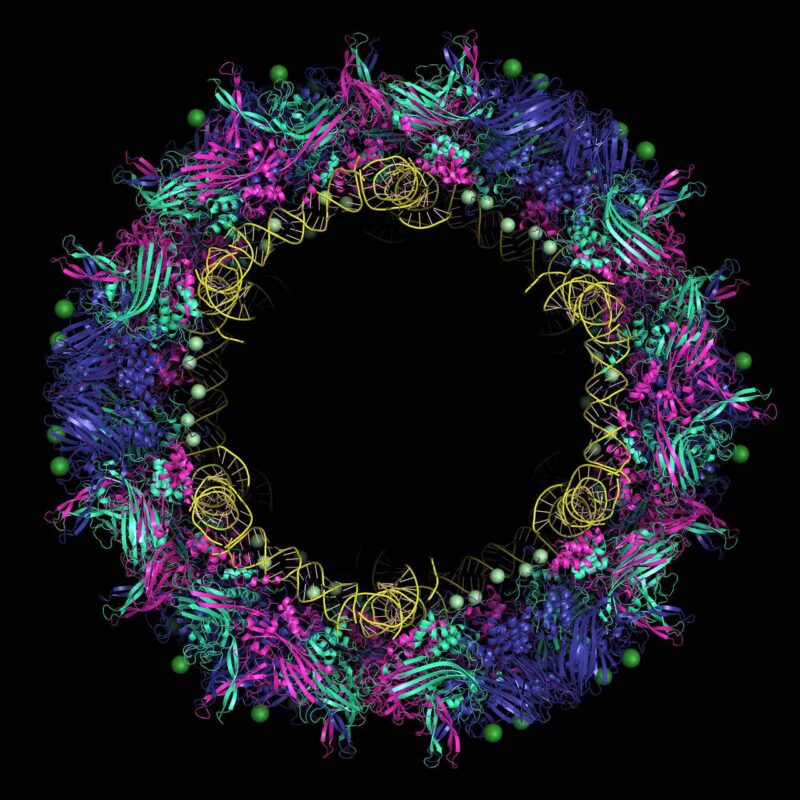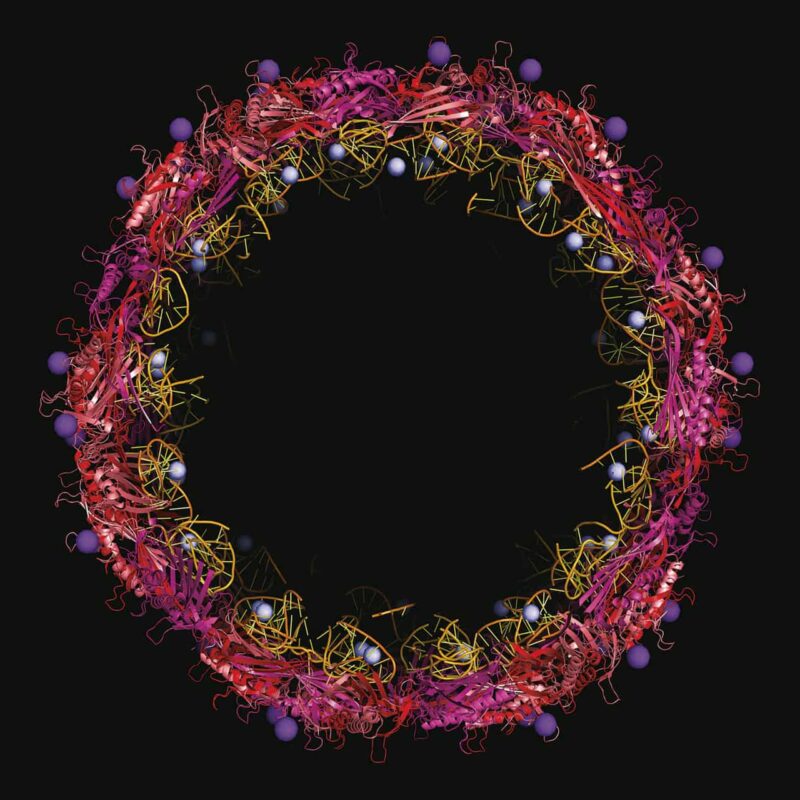Art and Science in Dialogue Art and Science in Dialogue
BACKGROUND
PROJECT INFO
An elegant example of the connections between science and the creative disciplines is demonstrated in the parallels between crystallography (the study of crystal structures) and pattern design.
Crystals are made up from a regular arrangement of identical units. Each unit contains one or more molecules, packed together in a symmetrical way. In a similar manner, the design of repeating patterns rely on the creation of motifs, which repeat in a symmetrical way.
The use of X-ray crystallography as a method for determining the complex structure of proteins and other biological molecules has enabled the study of large macromolecular assemblies such as viruses.
From the images under the microscope, the concept of visualising the geometry of viruses evolved. In particular, nested and expandable polyhedra provide new insights into viral architecture. The process of exploring their visual representation has resulted in the design of polyhedral models, providing mathematical insights and tools for the communication of science.
Year
2014 – 2015
Collaborators
Reidun Twarock (York), Scientific Direction
Emilio Zappa (York), Postgraduate Researcher
Moteijus Valiunas (Cambridge), Undergraduate Researcher
Adam Arstall (Oxford), Undergraduate Researcher
Funders
Centre for Chronic Diseases and Disorders (C2D2)
Holbeck Charitable Trust
University of Leeds
University of York
Wellcome Trust
EXPANDOHEDRA
A visual representation of the mechanism of the expansion of a virus is possible through expandohedra. These consist of pentagons attached by rigid rods, which represent protein links. The connecting rods enable the pentagons to rotate with a certain freedom, creating a visualisation of the asymmetric expansion.
NESTED POLYHEDRA
Inspired by the structures of viruses and fullerenes in biology and chemistry, we constructed a class of nested polyhedra as double shell structures. These provide blueprints for simple viral capsids to help predict information about its structure (for example capsid thickness).



GALLERY
"The exhibition and gallery talk at this meeting were a particular treat. I think all of us are drawn aesthetically by the symmetry and deviations in viruses. Seeing this represented in beautiful life sized objects struck a deep chord in me."
Professor Prevelige, Department of Microbiology, University of Alabama at Birmingham
- ‘Visualisations in Mathematical Virology’ in the C2D2 showcase at City Screen, York, UK (March–April 2015)
- ‘Viruses: Mathematical Visualisations’ as part of York Festival of Ideas, York, UK (June 2015)
- in MathArt, College of Fine Arts, Towson University, Maryland, Baltimore, USA (June–July 2015)
- in the Bridges Exhibition of Mathematical Art, University of Baltimore, USA (July–August 2015)
YORK FESTIVAL OF IDEAS, 2015
PUBLIC TALKS & OUTREACH WORKSHOPS
Through public talks as part of the programmes for Pint of Science (York, May 2015) and York Festival of Ideas (June, 2015), we shared insights into the interdisciplinary dialogue and process of working between scientist and designer.